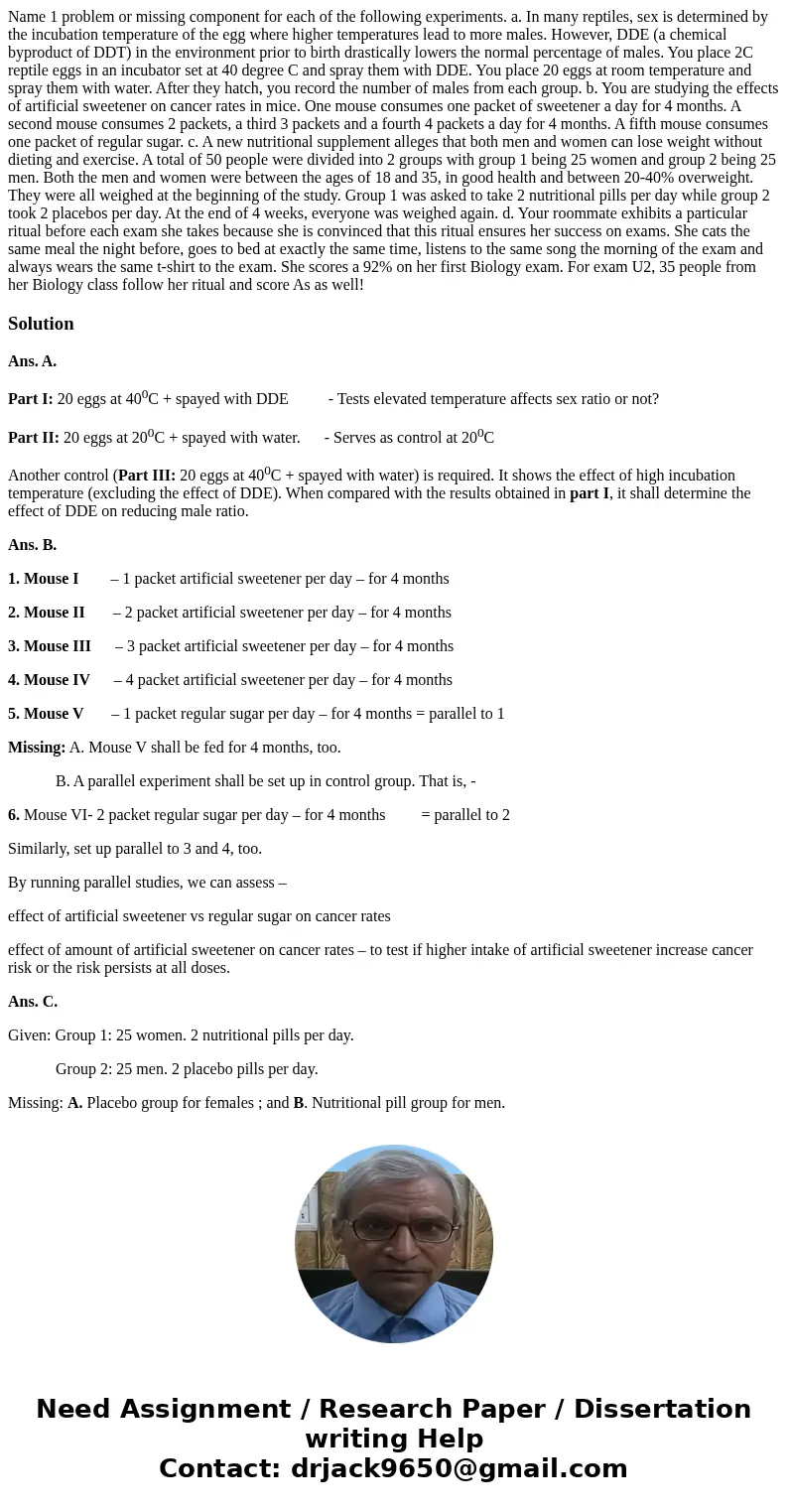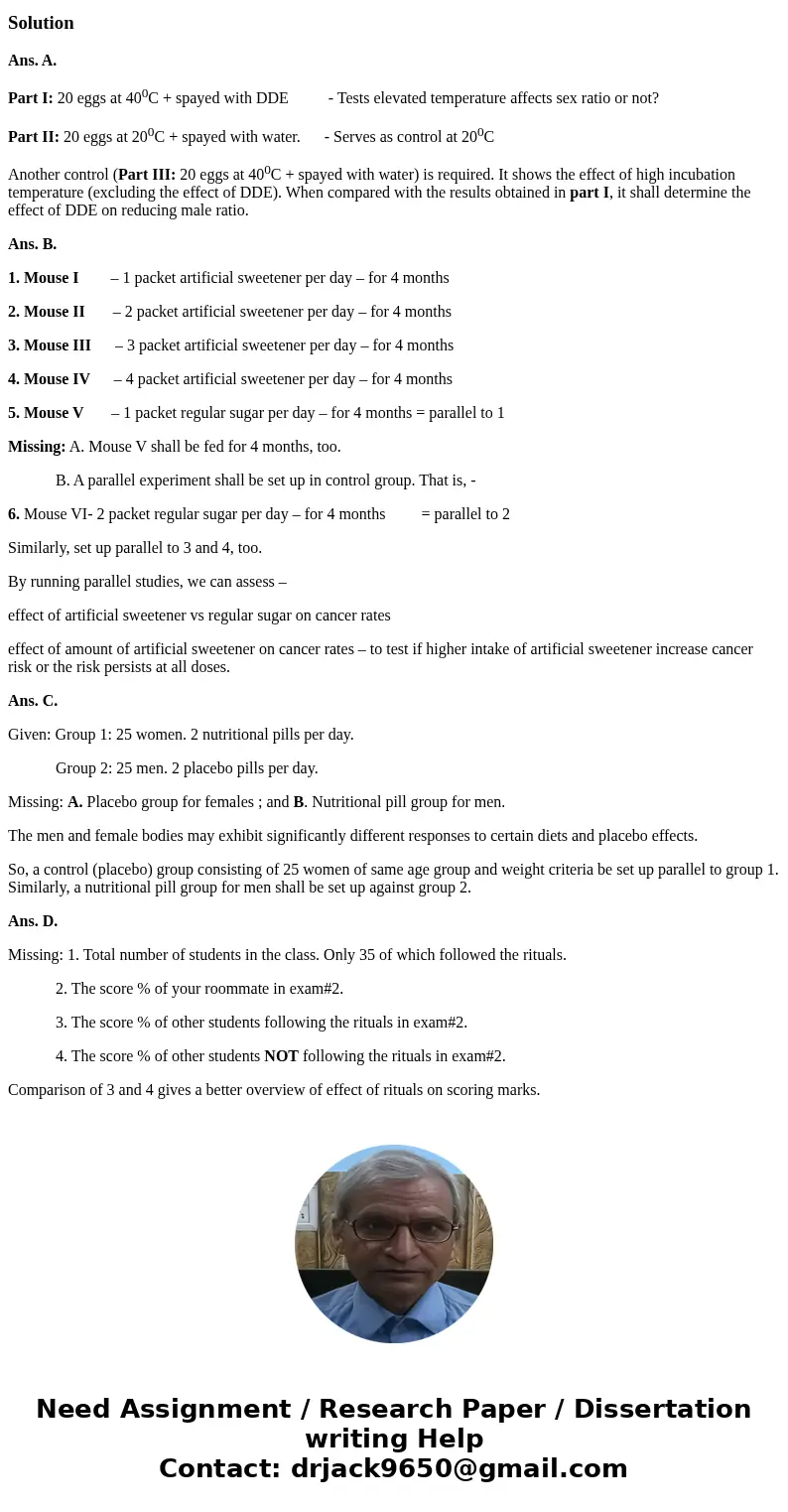Name 1 problem or missing component for each of the followin
Solution
Ans. A.
Part I: 20 eggs at 400C + spayed with DDE - Tests elevated temperature affects sex ratio or not?
Part II: 20 eggs at 200C + spayed with water. - Serves as control at 200C
Another control (Part III: 20 eggs at 400C + spayed with water) is required. It shows the effect of high incubation temperature (excluding the effect of DDE). When compared with the results obtained in part I, it shall determine the effect of DDE on reducing male ratio.
Ans. B.
1. Mouse I – 1 packet artificial sweetener per day – for 4 months
2. Mouse II – 2 packet artificial sweetener per day – for 4 months
3. Mouse III – 3 packet artificial sweetener per day – for 4 months
4. Mouse IV – 4 packet artificial sweetener per day – for 4 months
5. Mouse V – 1 packet regular sugar per day – for 4 months = parallel to 1
Missing: A. Mouse V shall be fed for 4 months, too.
B. A parallel experiment shall be set up in control group. That is, -
6. Mouse VI- 2 packet regular sugar per day – for 4 months = parallel to 2
Similarly, set up parallel to 3 and 4, too.
By running parallel studies, we can assess –
effect of artificial sweetener vs regular sugar on cancer rates
effect of amount of artificial sweetener on cancer rates – to test if higher intake of artificial sweetener increase cancer risk or the risk persists at all doses.
Ans. C.
Given: Group 1: 25 women. 2 nutritional pills per day.
Group 2: 25 men. 2 placebo pills per day.
Missing: A. Placebo group for females ; and B. Nutritional pill group for men.
The men and female bodies may exhibit significantly different responses to certain diets and placebo effects.
So, a control (placebo) group consisting of 25 women of same age group and weight criteria be set up parallel to group 1. Similarly, a nutritional pill group for men shall be set up against group 2.
Ans. D.
Missing: 1. Total number of students in the class. Only 35 of which followed the rituals.
2. The score % of your roommate in exam#2.
3. The score % of other students following the rituals in exam#2.
4. The score % of other students NOT following the rituals in exam#2.
Comparison of 3 and 4 gives a better overview of effect of rituals on scoring marks.


 Homework Sourse
Homework Sourse